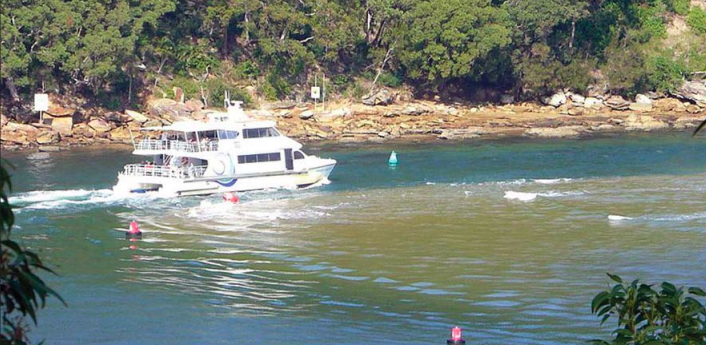The Ettalong channel dredging needs science, engineering and common sense, and not ill-considered amateur ideas, opinions and dogma, according to the Community Environment Network.
Chairman Mr John Asquith said: “When the public hear of beaches eroding, channels silting up and loss of foreshore, surely the first question is: What has changed?” He said four events should be looked at. They were the excavation for the Diggers building in 2004 and the use of the sand to make the beach wider; removal of native vegetation from the dune system from 2008; the rock wall built on the Ettalong foreshore in 2014 and the sandbag ball constructed to protect The Esplanade in 2015. Mr Asquith said the sand from the Diggers excavation “ended up in the channel to the north near Wagstaffe”.
“Native vegetation planted by volunteers on the foreshore was removed to improve access and views from 2008 onwards. “The vegetation was planted to stabilize the dunes and hold the foreshore together – so the volunteers resigned,” he said. “They were just four isolated changes but most of the works were done without studies of flows, sand deposition or long-term changes in currents, sea level rise and temperatures. “We need science and modelling from experts.” According to Mr Asquith, sand in the estuaries and beaches was an unstable material which under the influence of water, waves, tides and wind needed to be managed carefully. “Sand in the estuary and on the beaches is either accreting or eroding. “It is not sitting still,” Mr Asquith said. “Hence, dredging of the channel past Lobster Beach and Ettalong needs to be well thought out as the consequences of the wrong action could be catastrophic,” he said.
“Similarly, dealing with erosion at Ocean Beach needs experts.” Mr Asquith said two relevant plans had already been prepared by experts, based on studies and approved by the Council and the NSW Government. He referred to the Brisbane Waters Estuary Management Plan and the Broken Bay Beaches Coastal Management Plan. The plans called for “regular maintenance” of the navigation channel and said Ocean Beach sand needed to be stabilised with vegetation, according to Mr Asquith. “None of the studies or reports shows any hydrological connection between the channel and Ocean Beach,” he said. The recent proposal for Central Coast Council to purchase an Ocean Going Super dredge was ill-conceived, he said. “This is what is being used in to reclaim land in the South China Sea. “It would not fit in the channel and operation would be prohibitively expensive.”
Likewise, the idea of strategically depositing dredge spoil to enhances surf breaks and tap into super bank surfing opportunities and tourism was unlikely to work. “Coastal experts have told CEN that sand will move back very quickly when dumped on the Ettalong sandbank near a channel.” Replenishing the beach using truckloads of sand was another recent suggestion. “It is likely this sand will be washed away into deeper water at Broken Bay never to be seen again. “CEN could find no credible studies to support a strategy of pumping sand out of the clogged channel into Brisbane Water at Half Tide Rocks and onto Ocean Beach.” Rather than removing vegetation from Ocean Beach, the Broken Bay Beaches Coastal Management Plan sets the opposite high priority “to stabilize the sand with vegetation” Mr Asquith said.
“There is a real threat that some of these schemes could cost the Central Coast a fortune and put property and lives at risk,” he said. “The sand that circulates off Ettalong needs to be kept in the loop and out of the channel. “If it was used at Ocean Beach it could be permanently lost into deeper water south of Ocean Beach. “Then more foreshore erosion could occur as nature seeks to re-establish equilibrium around Ettalong. “Council and the NSW Government need to tread carefully and develop a long-term strategy that implements the management plans and does not change with every opinion. “Otherwise, the consequences could be irreversible and expensive.”
SOURCE: Media release, 17 Mar 2018 John Asquith, Community Environment Network



